In this article, we seek to take a closer look at the tortoise (latin: Testudinidae), examining amazing examples of the species through exploring elements of history, defining features, as well as the nature of these noble creatures.

We spend some time exploring some of the key species of tortoise, both domestic and wild, taking a closer look at the temperaments and defining features of those which make great pets, and exploring some of the fascinating history of those best observed from afar.
We’ll also be learning about the conservation needs of the tortoise along the way, and the conservation status of each breed mentioned will be listed.
On this note we’ll also be exploring the tragedy of species extinction, and how and why this happened.
Lastly, we’ll be concluding with some final thoughts involving the legality of ownership of domestic tortoises, as well as the correct way to interact with a tortoise in the wild.
We hope this article will serve as a useful all in one guide to the nature of this fascinating animal group, giving a nod to the considerations you should take before ownership, as well as what we can do to help preserve the 40-50 different species still living on Earth today.
Quick Navigation
Pet Tortoise Species
There are many different types of tortoises suited to life as domestic pets. On the whole, these shy creatures can become great lifelong friends, (depending on the age span of the breed, of course) and are docile and gentle companions.
Greek Tortoise (Testudo graeca)
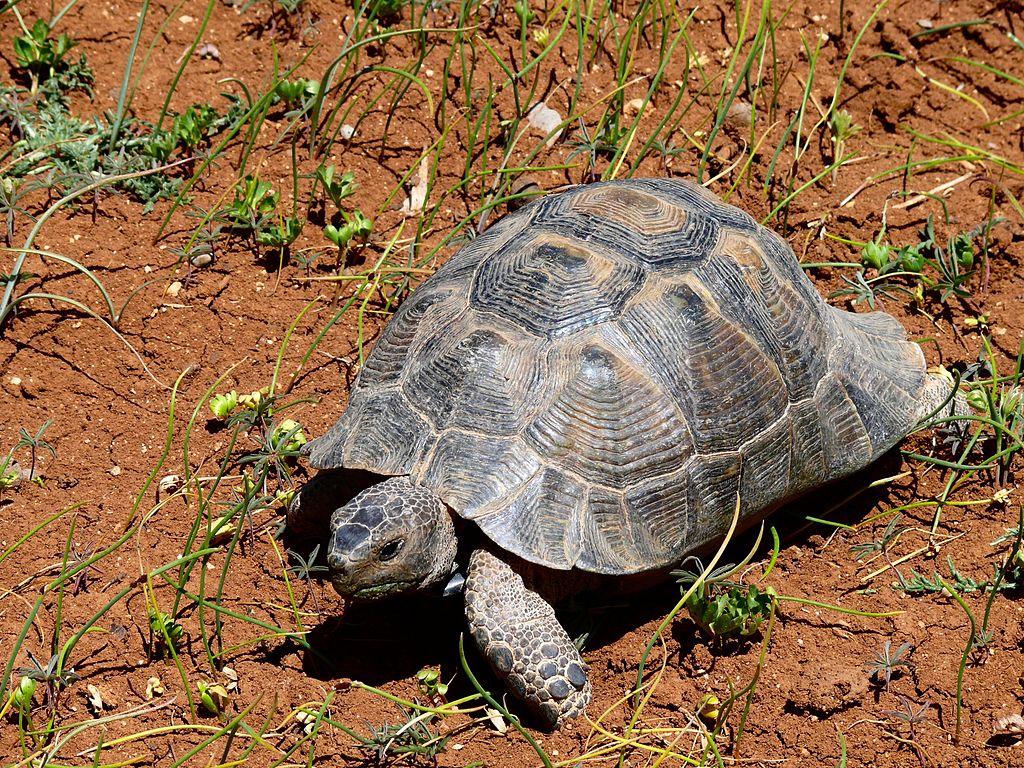
Conservation status: Vulnerable (threatened)
- Small in size
- Active in daytime
- Beginner friendly
- Enjoy interaction
- Long lifespan
The Greek tortoise is one of the more common breed of tortoise, and makes an ideal pet, particularly for those new to tortoise ownership.
As they are small, many owners only need to buy one enclosure for the duration of the tortoise’s life. Greek tortoises are most active in the day time, making them great pets to watch and interact with – which this breed genuinely enjoys.
It is worth noting, however, that this breed of tortoise does have a lifespan of around 125 years, so potential owners really need to consider if they’re willing to have a lifelong companion.
Leopard Tortoise (Stigmochelys pardalis)
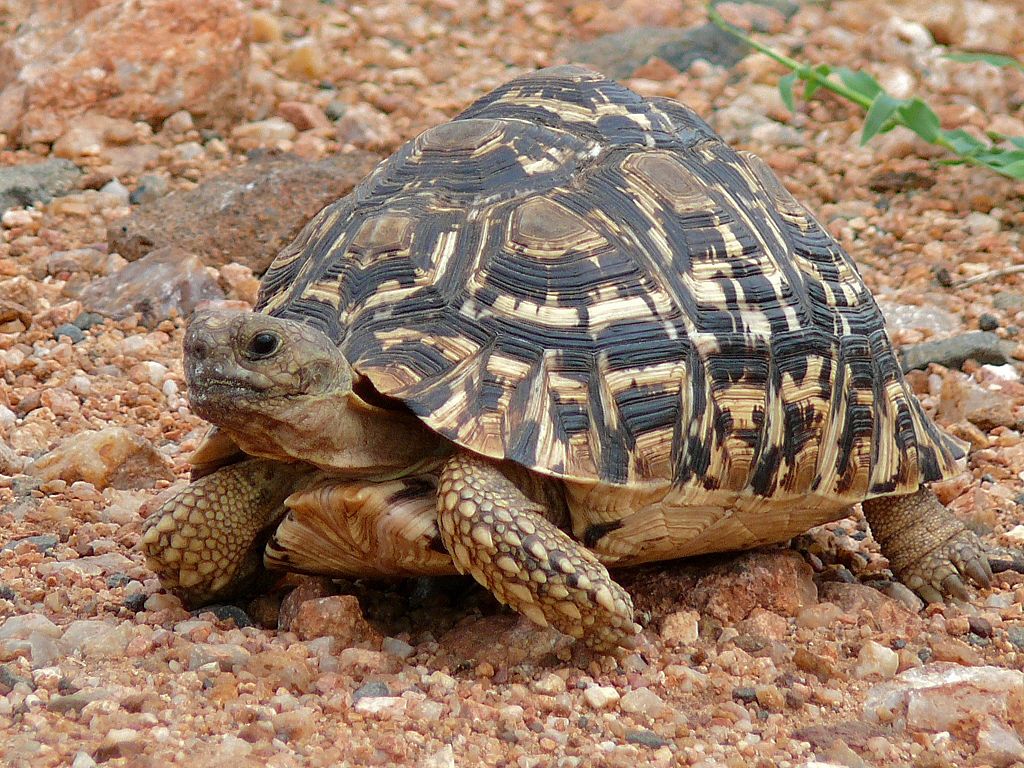
Conservation status: Least Concern (Safe)
- Medium in size
- Attractive markings
- Don’t enjoy being handled
- Enjoy interaction
- Do not hibernate
Leopard Tortoises make great companions for those looking for larger pets. They have stunning dapples on their shell, which is where they get their name.
These tortoises do not like being handled, but as they are of medium size, when they reach adulthood they typically cannot be easily lifted anyway!
Leopard tortoises do enjoy interaction, however, and, as they do not hibernate, you can spend time with your pet all year round.
Red-footed tortoise (Chelonoidis carbonaria)
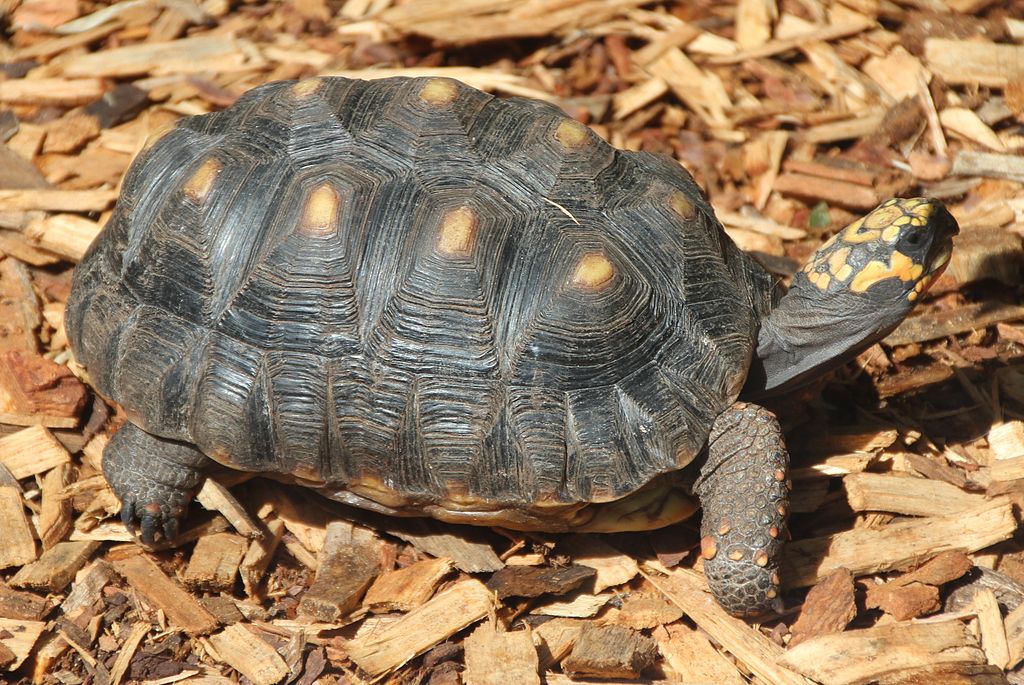
Conservation status: Vulnerable (threatened)
- Medium in size
- Attractive markings
- Not shy
- Curious in nature
- Omnivore
- Prefers humid environment
This breed of tortoise is perfect for owners looking for a pet with character. They are curious in nature and far less shy than other species, meaning you can have great interactions with your companion.
As they prefer a more humid environment, they may require extra equipment in their enclosure such as a heat lamp or humidifier.
The red-footed tortoise is one of the few tortoise breeds to require meat in their diet, and will happily munch on baby mice or chicks.
The balance between meat and plant matter should be carefully monitored, as too much protein can weaken your pets shell.
Indian Star Tortoise (Geochelone elegans)
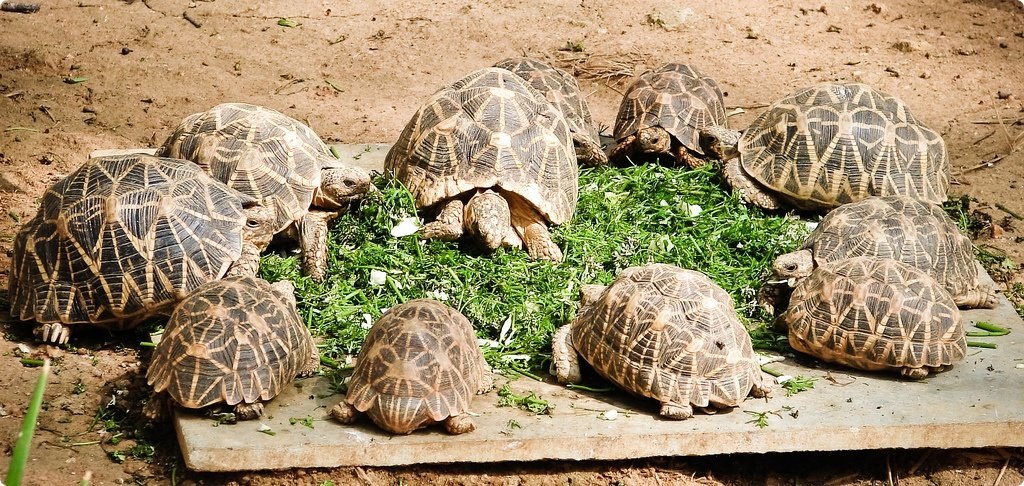
Conservation status: Vulnerable (threatened)
- Small in size
- Attractive markings
- Shy
- Doesn’t need to hibernate
- Able to be handled
- Better for experienced hands
While the Indian star tortoise can be considered a little fragile or temperamental to care for, experienced handlers promise that once you have the correct set up, owning an indian star tortoise becomes the same as any other tortoise.
However, it still might be advisable to steer clear of this breed if you’re a novice in reptile care. The indian star tortoise has beautiful markings upon its shell, which makes it a lovely pet to observe, and as they don’t need to hibernate, they can be seen all year round.
As they are a smaller breed, they can also be handled but it is worth noting that they can be very shy at first. However, they typically will open up to you given time.
African Spur-thighed tortoise (Geochelone sulcata)
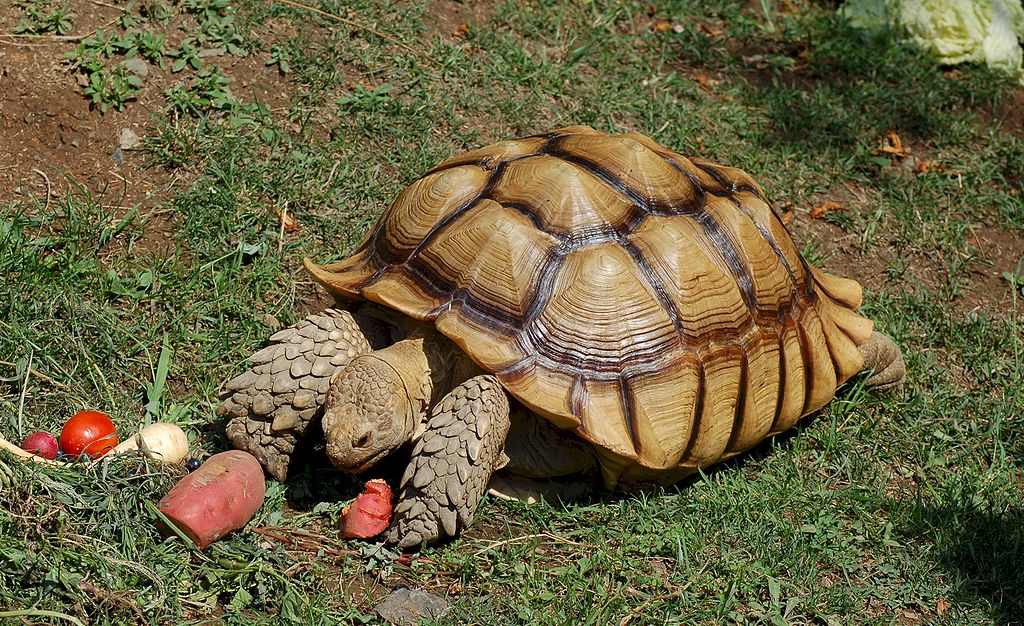
Conservation status: Vulnerable (threatened)
- Large in size
- Set up needs to reflect adult size
- Shy when small
- One of the most interactive tortoises
- Doesn’t need to hibernate
If you’re looking for a tortoise you can have a close lifelong bond with, and you have the space for a larger pet, then an African Spur-thighed tortoise may be the perfect choice.
They do not need to hibernate, and while shy when small, when adult they are a breed that enjoys interaction and will even come to you for attention.
Of course, it is very important to note that if you raise your shelled baby from a hatchling, you’ll need to make sure you have the space and set up to accommodate your tortoise’s large size when fully grown.
Hermann’s Tortoise (Testudo hermanni)
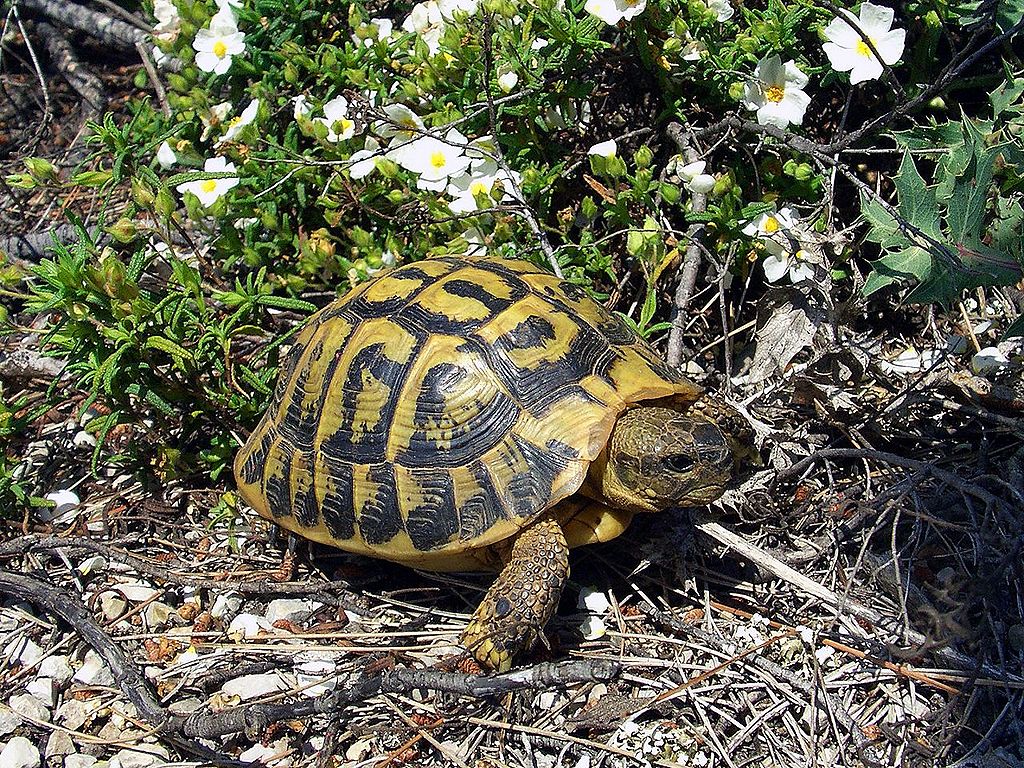
Conservation status: Near Threatened
- Medium in size
- May require certification to own
- 50+ years lifespan
- Requires indoor habitat
- Needs to hibernate
Probably the most common tortoise we envisage when we think of a pet tortoise, Hermann’s tortoises were very popular in the 1970’s and 80’s.
Nowadays, due to mishandling and the breed becoming near threatened, many countries require specific certification for the ownership of Hermann’s tortoises.
Unlike some of the other tortoises on this list, once they reach around three years old, Hermann’s tortoises will need to hibernate.
These tortoises also are not suited to colder environments, and will need a heated indoor enclosure to best mimic their natural environment.
While there have been individuals of this species who have lived to over 100 years, the lifespan of a Hermann’s tortoise is usually around 50 years, and therefore will constitute a lifelong commitment.
Russian Tortoise (Agrionemys horsfieldii)
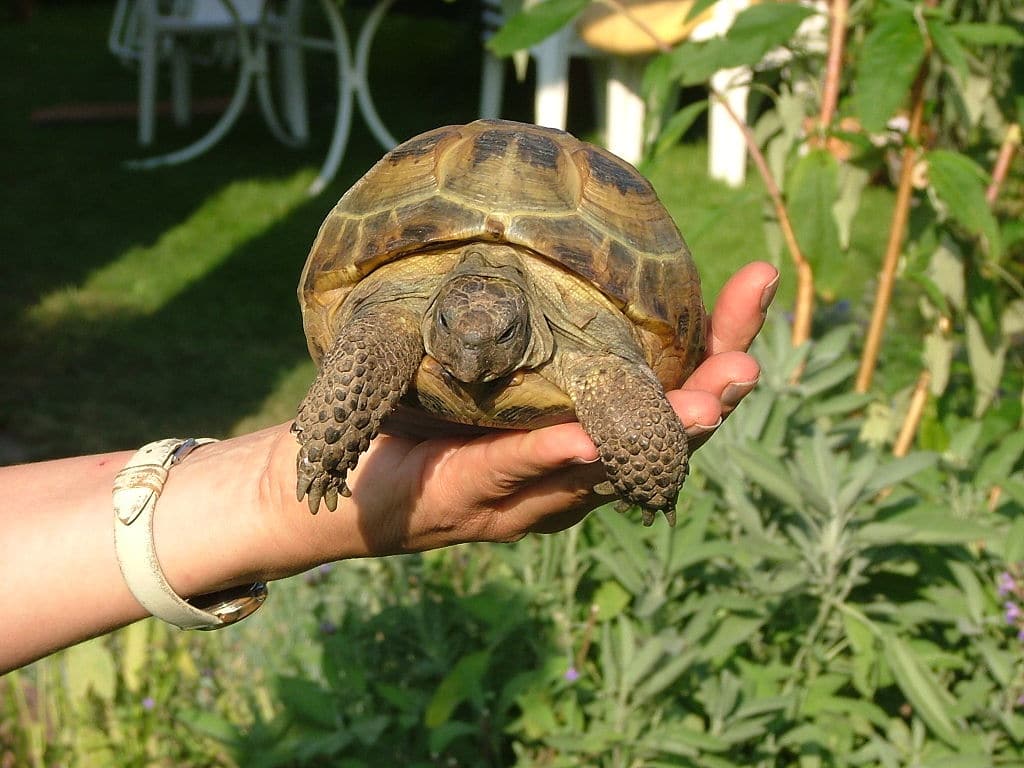
Conservation status: Vulnerable (Threatened)
- Small in size
- Also known as: Afghan tortoise, Central Asian tortoise, Horsfield’s tortoise
- 75+ years lifespan
- Can hibernate, bur does not need to
The Russian tortoise is another popular choice of tortoise to be kept as a domestic pet. Small in size, and with charming features, many fall in love with this breed.
However, it is important to note that with a lifespan averaging 75 years, and many well cared for tortoises exceeding this, owning a Russian tortoise constitutes a lifelong commitment.
As this species of tortoises’ hibernation patterns are reflective of their environments, if kept solely as an indoors pet, owners will find their tortoise is active all year round.
This species also needs to be fed a well researched diet, as it is susceptible to a build up of toxins found in certain foods, which can make your shelled friend quite unwell.
Wild Tortoise Species
There are a variety of different tortoises which are unsuited to domestic settings, best viewed in the wild, or at a designated reserve or zoo, and sadly many of these fascinating creatures are endangered.
Hunting for food and medicine, damage to natural habitat, and the introduction of predators are all common reasons as to why the numbers of certain tortoise species are so dwindled.
Galápagos Tortoise (Chelonoidis nigra)
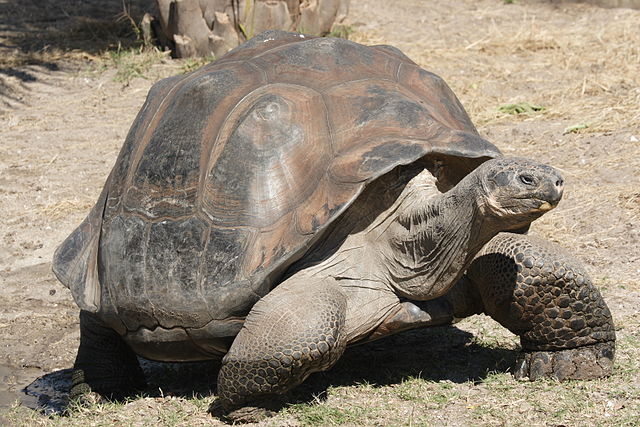
Conservation status: Vulnerable (threatened)
- Largest Tortoise
- Long lifespan (150 years +)
- Observed by Charles Darwin
- Many giant tortoise subspecies are extinct
- Expresses mutualism
Probably the most typical species that comes to mind when thinking of tortoises, the Galapagos tortoise is the largest of all tortoises, and has an equally large and fascinating history to match.
First discovered by sailors in the 16th century, the Galapagos tortoise, as its name might suggest, is native to the tropical Galapagos islands.
The Galapagos tortoise was observed by Charles Darwin on his second voyage of the Beagle. He noted that the tortoises living upon humid highlands appeared greatly different to those who lived on dry low lowlands, the former having a domed shell, larger size, and shorter neck, and the latter being smaller, with a flatter shell and long necks.
It was this crucial observation which helped give Darwin grounding and development to his famous theory of evolution.
The giant tortoise and its 15 subspecies have had an unstable history, mostly due to the interventions of man. Of the original 15 subspecies, only 10 remain today.
Species became extinct due to over exploitation of the creatures for use in medicine, food, as well as destroying their habitats and introducing non-native animals such as pigs and rats.
Over the years Galapagos tortoises numbers dwindled, reducing from 250,000 to only 3,000 in the 1970’s. Luckily, intensive conservation work has helped increase these numbers to around 19,000, which while a great improvement, is still a fraction of what the numbers of this tortoise once were.
A final fascinating fact about these majestic creatures is that they practice mutualism. This the interaction with other types of animal for the mutual benefit of both parties.
For the Galapagos tortoise, this interaction involving being groomed by indigenous birds who consume the parasites found on their skin. The bird gets a filling meal, and the tortoise is freed of annoying itches.
Maybe the Galapagos tortoise shows us as humans the benefits of caring and healthy mutualistic interactions between species.
Desert Tortoises: Agassiz and Sonoran (Gopherus agassizii and Gopherus morafkai)
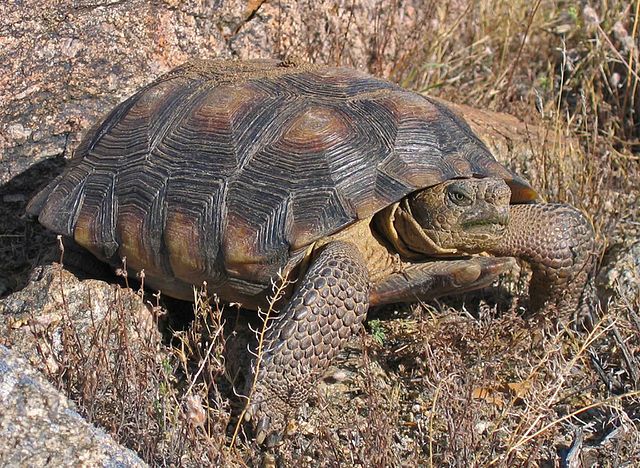
Conservation status: Vulnerable (threatened)
- Found in the USA and Mexico
- Can be domesticated but suited to experts
- Medium Size
- Lives in underground burrows
While these two species of tortoise can be domesticated, as they require a more specified environment, including a yard that they can burrow in, they are best reserved for experts. However, as they are native to the USA (mostly in the Mojave desert), you have seen one of these species in the wild.
Because they live in a harsh desert environment, the desert tortoises are some of the more hardy of the tortoise breeds.
They are able to survive imbalances in their diet, such as a lack of water, and can survive both high and very low temperatures in their underground burrows.
Pinta Island Tortoise (Chelonoidis abingdonii)
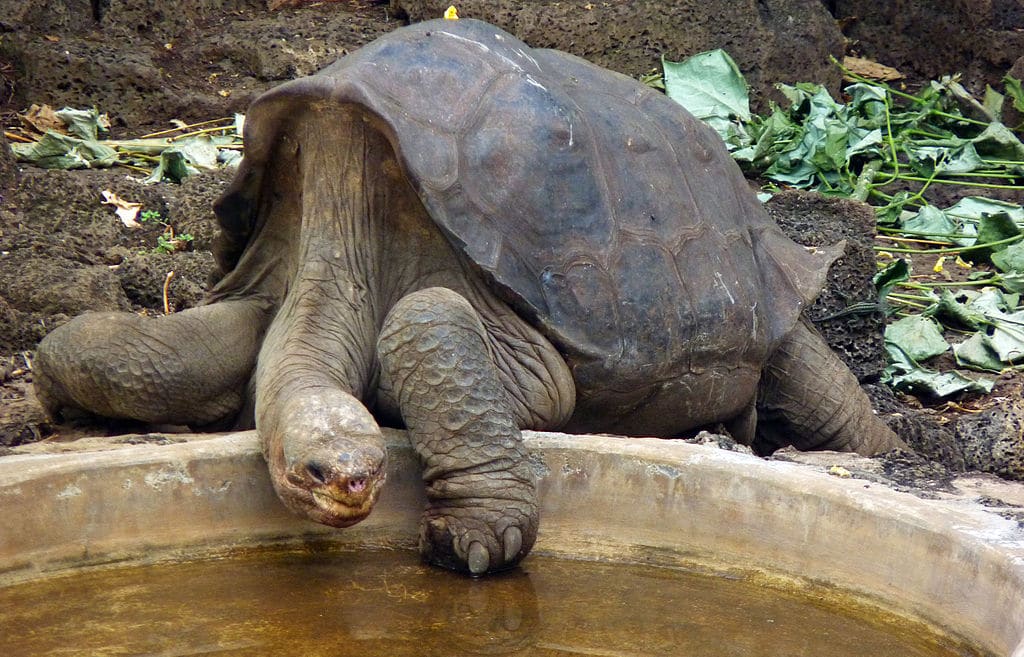
Conservation status: Extinct (as of 2012)
- Also known as Abingdon Island tortoise
- The last of its kind ‘Lonesome George’ died in 2012
- Large in size
- Wiped out due to hunting
The Pinta Island tortoise is one of the 5 now-extinct species of giant tortoise. Its last known individual Lonesome George died in captivity in 2012 at the age of 101.
While this species of lowland giant tortoise shares most of the characteristics of its 10 surviving breeds, the Pinta Island Tortoise is particularly important due to the message the fate of this species sends.
As you’ll no doubt have noticed, the majority of tortoises on this list are threatened, and sadly this is almost entirely down to the habits and exploitation by humans.
The hunting, removal of habitat and introduction of non-native animals have caused the tortoise one of the oldest animal families to become endangered on a widespread level.
Tortoise Species, Care, and Conservation
Tortoises are wise, soulful creatures, with a lifespan that can cross decades and even centuries.
Tortoises such as ‘lonesome George’ have captured the hearts of nations, and, while they have always been a popular pet option, in recent years they’ve become a great alternative for families and individuals with allergies, as well as being suited to those looking for a lower maintenance pet suited to living in smaller spaces.
In this article we’ll be taking a closer look at a wide range of tortoise species, from those that make great pets, to those you’re more likely to find in the wild or in a zoo.
We’ll also be taking a peek at the animal as a whole, as well as learning the key differences between tortoises and their amphibious turtle and terrapin counterparts.
The Tortoise
The tortoise (latin: testudinidae), is a land-dwelling reptile from the Chelonian family, and are of the suborder ‘Cryptodira’, which is characterized by the ability to retract the neck and head back into a protective shell.
Common tortoise species include the Greek tortoise (Testudo graeca), and the Russian tortoise (Agrionemys horsfieldii) – but, it is the giant tortoise, also known as the Galapagos tortoise (Chelonoidis nigra) that many of us picture in our minds.
Natural Habitat
Most prevalent in Asia and Africa, these creatures can also be found the in the Americas. Due to their popularity as pets, particularly in the 1970’s, it isn’t too uncommon to find the occasional wild tortoise in other countries also.
All breeds of tortoise are terrestrial, meaning they live on land, and, as their varied countries of origin might suggest, tortoises can live in a vast range of habitats.
While most prefer semi-arid habitats, tortoises can also be found in grassland, deserts, evergreen forests, tropical islands, and even mountainsides.
Life Span
Probably most common knowledge is a tortoise’s long lifespan, which typically ranges from 80-150 years.
However, over the years there have been many individuals which have stood out from their exceptionally long lives. Some tortoises even became famous for their advanced age, such as Adwaita, an Aldabra giant tortoise.
While her age was not verified, she was believed to have been around 255 years of age when she died in 2006. The longest living tortoise whose age has been confirmed is Johnathan, a Seychelles Giant tortoise hatched in 1832.
Currently aged 187, Jonathan is the oldest known terrestrial animal in the world.
Diet
In regards to diet, most tortoises are herbivores, but there are some species that enjoy live food. In general, the plant matter tortoises consume include grasses, leafy greens, flowers, weeds, and sometimes fruit.
For those of the species that are omnivores, the meat included in their diet is usually reserved to worms, insects, and carrion.
While these items encompass the general diet of tortoises, different subspecies can vary wildly in their dietary requirements.
Characterizing Features
Of course, probably the most defining feature of a tortoise is its shell. The shell is made up of two parts, the carapace, which is the top, typically domed part, and the plastron, which is the underside.
Similar to a tree, the rings on the carapace can be used to give an estimation of a tortoises age, but this is certainly not an exact science.
While you may have seen tortoises leaving their shells in cartoons, in real life the tortoise’s spine and rib cage are attached to the carapace, meaning there is no tortoise without its shell.
All tortoises also have distinctive hind limbs (front legs). These legs are column-like, and reminiscent of an elephant’s.
Tortoises vs. Turtles
The most common mistake people make when referring to tortoises is confusing them with turtles. While many think the term is interchangeable, while they are similar, tortoises and turtles are two different species.
One of the biggest differences between the two is that where all tortoises are terrestrial, most turtles are aquatic. Tortoises have heavy, rounded shells, whereas turtles shells are far lighter and streamlined.
These species also differ greatly in the appearance of their limbs, with turtles having webbed feet with long claws, compared to a tortoise’s strong elephantine legs.
In regards to diet, where the majority of tortoises are mainly herbivores, most turtles are omnivores. The biggest difference between the two species is most certainly lifespan.
As previously mentioned, tortoises live for up to 150 years, where as turtles live a fraction of that, with a range of around 20-40 years.
Legality of Tortoise Interaction and Ownership
Because they are so threatened, there are many laws and regulations in place for the interactions with wild tortoises, as well as legal requirements for ownership.
These are often highly reflective of the breed of tortoise, with typically less regulations upon unthreatened breeds compared to those who are endangered.
In the Wild
In the USA, tortoises are protected by law even when in the wild.
Interactions with tortoises such as touching, disturbing, or harassing a wild tortoise are illegal, in short, tortoises are to be viewed and enjoyed, but left well alone. Collecting tortoise remains are also illegal.
The only time when it is acceptable to handle a wild tortoise is if you find one in danger, such as walking across a road. If this is the case, then simply lift up the tortoise, keeping it level, and gently carry it to the side of the road in the direction it was heading.
Of course, if you find a wild tortoise noticeably injured, then you should also notify the respective authorities.
As Domestic Pets
The rules and regulations of tortoise ownership in the USA really vary from breed to breed, most commonly if you have had your tortoise for many decades, then some of the more recent rulings will no apply to you.
Most medium to large tortoises will require microchipping, the same as any other pet, allowing them to be identified should they go for a wander or fall into unfriendly hands.
If your pet is too small for a microchip, then you may be required to gain certification of your ownership, with elements such as unique defining features clearly outlined, to ensure your tortoise can be linked back to you if need be.
The breeding of tortoises, however, is an entirely different ballgame. Almost all species will require a licence should you wish to breed them, and breeding and distributing tortoises without one is a criminal offense.
Final Thoughts
Tortoises are fascinating creatures that visually harken back to prehistoric times and have hundreds and hundreds of years of fascinating history.
From shaping scientific theories to buoying scientific research, and sadly becoming figureheads for conservation efforts, the tortoise has a list of fascinating facts about as long as it’s lengthy lifespan!
With 40-50 known species, and even more subspecies, the tortoise family is full of a wealth of different characters, each of whom have perfectly adapted to survive in their natural habitat.
As previously mentioned, due to many human inflicted factors, many of this wonderous species are endangered, making conservation and a change in attitudes essential for the species’ overall survival.
Many breeds are well-suited to domestication and can create interesting and highly rewarding pets, and while they can require specified set ups, once these are established, owning a tortoise can be as simple as owning any other pet.
Unlike more common pets such as dogs and cats however, due to their hefty lifespan, tortoises really are a lifelong commitment, and ownership should not be taken lightly.
If you’ve dreamed of a tortoise for many years but do not feel you can give such a level of commitment, then there are many tortoise charities and conservation groups which would certainly benefit from your time and support.
However, if you take the time to learn about tortoises, you may find that you can offer a wonderful home for one of these beautiful reptiles.